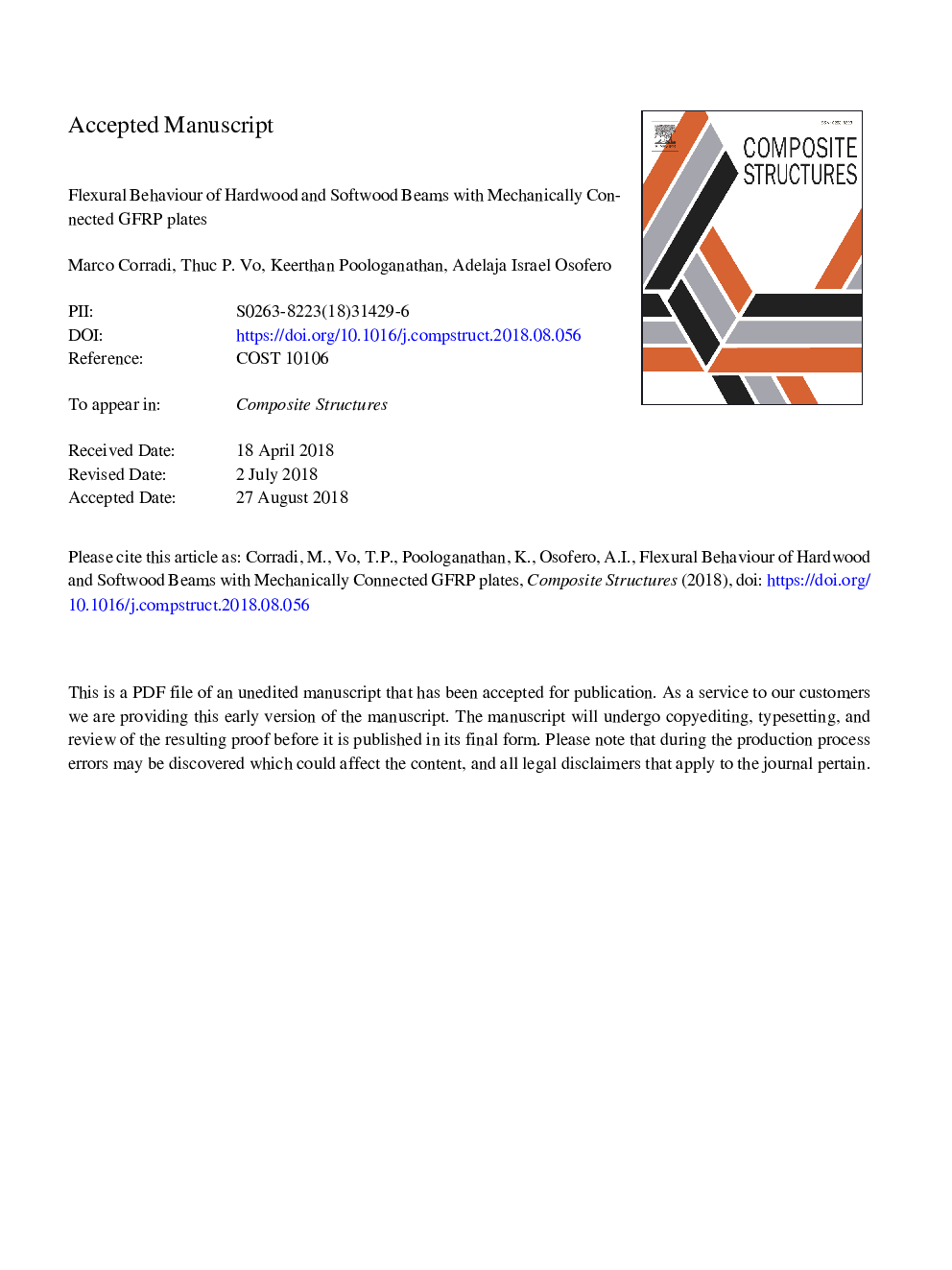| Article ID | Journal | Published Year | Pages | File Type |
|---|---|---|---|---|
| 10131674 | Composite Structures | 2018 | 44 Pages |
Abstract
The use of Glass Fiber Reinforced Polymers (GFRP) can delay or prevent tension failure in timber beams under loading and highly reduce tensile stresses. In this paper, the problem of reversibility, compatibility, and poor performance at high temperatures, of “traditional” organic adhesives was mitigated through the use of metal connectors. The flexural behaviour of hardwood and softwood beams reinforced by mechanically connected GFRP plates, has been studied through series of experimental investigations and numerical modelling. The experimental program included strengthening and testing of a total of 91 beams (50 hardwood and 41 softwood). Each beam was loaded above its service load until complete failure. Different strengthening layouts and quantity of metal connectors were used. The increment in capacity and stiffness is the main focus of this paper and effects of strengthening on deflection, failure load and failure mode, strain, and beam ductility were discussed in details. The combination of different GFRP configurations with appropriate amount of metal connectors, led to the doubling of the maximum load carrying capacity of the beams.
Related Topics
Physical Sciences and Engineering
Engineering
Civil and Structural Engineering
Authors
Marco Corradi, Thuc P. Vo, Keerthan Poologanathan, Adelaja Israel Osofero,
